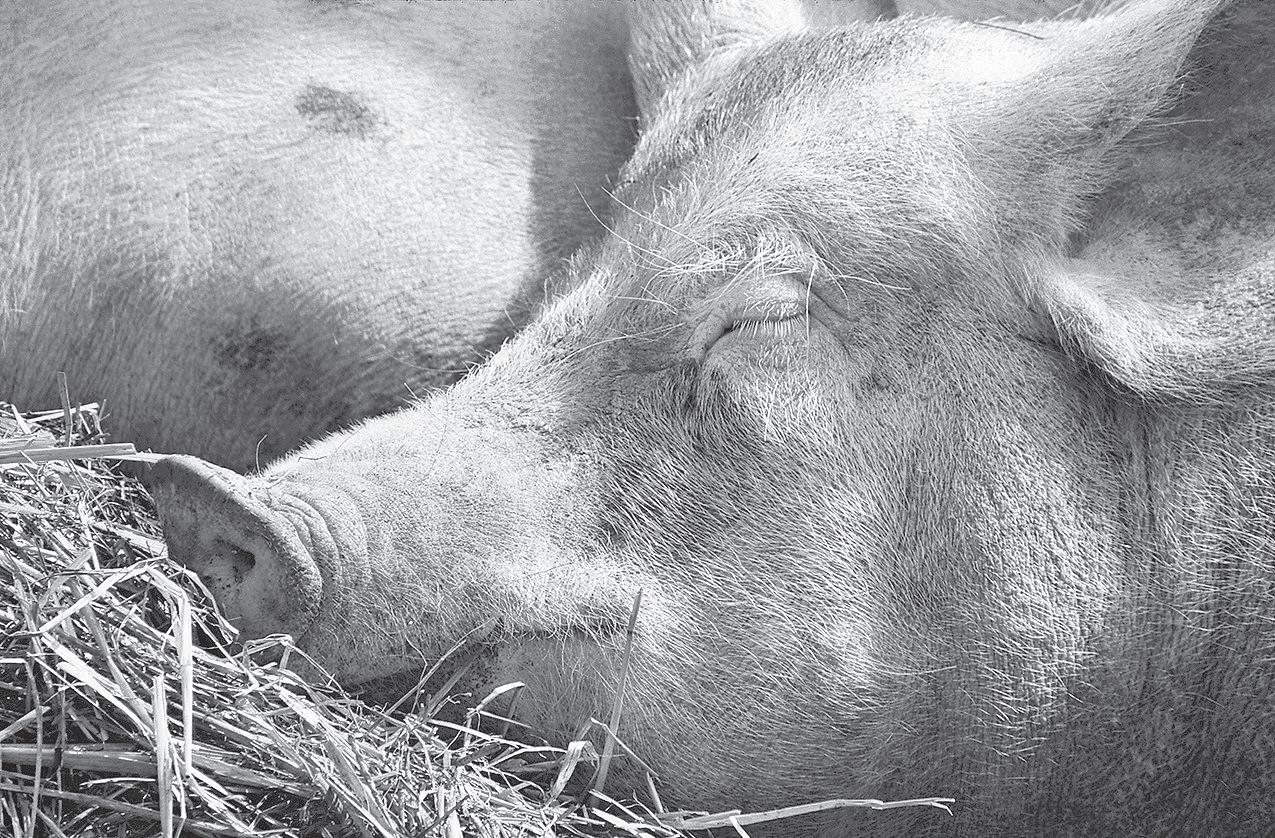
2 minute read
The basics of raising PIGS
Metro Creative
Many people subscribe to the notion that “everything is better with bacon.” Imagine being able to control the quality and flavor of pork products, and knowing just what went into producing delicious bacon?
In an era of growing uncertainty about commercially produced food, many agriculturally inclined people are raising livestock right on their properties, and small-scale pig farms can be a successful venture.
Despite pigs’ reputation as dirty animals, the animal resource PetHelpful indicates they are actually one of the cleanest farm animals. Pigs tend to wallow in mud only if they do not have proper shade and a clean, steady water supply to regulate their body temperature. Furthermore, giving pigs plenty of space to roam will enable them to keep dry, clean and cool.
Pens should be large enough so pigs can sleep and eat on one end and use the other end for soiling. Pigs also are intelligent animals that will adapt to routine. This means it may be easier to care for pigs than some other farm animals.
Even though pigs can grow to be quite large, they do not need to live on an expansive farm. Many pigs can live quite well on an acre if their pen and foraging areas are rotated periodically. Data from the past 50 years shows that today’s pig farms use less land and other resources to produce one pound of pork, according to the National Pork Board. Therefore, raising pigs can be a sustainable undertaking.
According to Mother Earth News, when selecting pig breeds for a pig farm startup, these are popular as lean-meat producers and shouldn’t be hard to find: Yorkshire, Duroc-Jersey, Berkshire, Hampshire, Poland-China, Chester White and Tamworth. Choose sows (females) or barrows (castrated males) for the best-tasting meat. Also, keep in mind that pigs are social animals, and even though the average family will do just fine with one pig’s worth of meat, pigs do better if raised in pairs or more.
Pigs need a varied diet to thrive. Diets should include grain, milk, fruits, vegetables, and greens from pasture. Experts suggest novices ask a veterinarian or another pig farmer about feeding. A family garden or bartering with other families nearby for food materials can keep feeding costs minimal.
Many pigs can be butchered by the age of six or seven months. After pigs reach that age, they begin to grow quite large and become a much larger investment of time and money.
Pig farming can be a worthwhile venture. More in-depth information on raising pigs is available at http://porkgateway.org/resource/ introduction-to-raising-pigs/.


